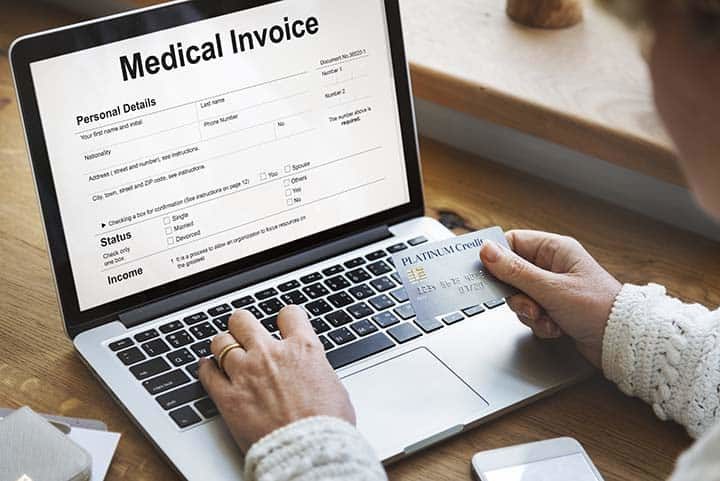How Consumers Think About Hospital Debt Collection
Posted on September 20, 2021 by Kylene Ordway

In 2020, consumer finance company Credit Karma conducted an analysis of 20 million members in the United States. The results showed that Americans owed a total of $45 billion in medical debt — around $2,200 per member surveyed. Hospitalizations were responsible for one-quarter of all the medical debt.
Medical debt has been growing since the coronavirus pandemic, during which millions of Americans lost their jobs and health insurance. But even before coronavirus, studies showed that around one-third of Americans had medical debt, and around half of those who owed debt had defaulted on it.
For healthcare providers, there’s a lot of money being left unpaid for services rendered. The problem is, debt collection is often convoluted and rarely straightforward. A debt collection survey report from the Consumer Financial Protection Bureau found that “more than half of consumers (53%) who were contacted about a debt in collection in the past year indicated that the debt was not theirs, was owed by a family member, or was for the wrong amount.”
Brad Stephens has served for eighteen years in the Bad Debt Division and as a Compliance Manager with Keybridge Medical Revenue Care. He offers his insights on this ever-challenging —and ever-changing — medical debt landscape throughout our article.
Patient Confusion
The previously mentioned survey report showed just how confused patients often are when it comes to understanding what debt they owe, what their insurance covers, and what happens if or when they use an out-of-network provider.
Mr. Stephens agrees, pointing out that many patients are reluctant to pay what the insurance didn’t cover because they believe their plans should have covered more. Some patients also believe their plans should cover 100% of their procedures.
As well as not knowing how to pay off their debt best, many patients did not know they could negotiate on their medical bills, or that they could ask their medical provider or insurance to clarify what they may owe before services were provided.
See Things From the Patient’s Point of View
Mr. Stephens gives valuable insight into how many patients think of their debts, and how providers can use these points to provide better services regarding medical debt collection.
He says:
- Consumers want to do the right thing and repay their obligations, but may not know how.
- Medical debt is not self-inflicted.
- Consumers who seek medical treatment do so as a physiological need.
Consumers will often place medical debt repayment low in priority behind shelter, food, basic needs, and sometimes entertainment.
In addition to understanding these points, Mr. Stephens says Keybridge’s success to medical debt collection takes a “unique approach and a unique set of skills taught by expert trainers.” He states The KeyBridge Patient Care Representatives use a combination of active listening, compassion, knowledge and empathy which often leads to first-call resolutions and positive patient experiences.
How Healthcare Providers Can Help
Healthcare is no longer just a medical industry — it’s a consumer industry. For many patients, understanding their financial responsibilities can be stressful and confusing. Healthcare organizations can set themselves apart from their competitors by humanizing the patient’s financial experience. Since fewer than 40% of Americans have $1000 or more in savings, and as patients become increasingly responsible for their own medical costs, it’s important that healthcare providers communicate with patients before the debt is owed.

It turns out, the best way to increase revenue is by helping people. Mr. Stephens states, “Repayment for medical services falls at the end of the patient cycle and will often be the last thing he/she remembers about their total patient experience.” To help recover costs from patients, he says “minimum wait times, friendly and knowledgeable staff, flexible payment terms and communications that are clear, precise and consistent” will set your organization apart and help recoup payment.
Patients can find it confusing to be billed for a service so long after a doctor saw them. Hospitals and healthcare organizations can help by creating simplified bills that clearly show what they owe, what services were performed and what is covered by insurance. Timely delivery of bills and keeping a limit on how many bills are sent can help.
By explaining clearly what the patient will owe, and what their insurance will cover before any services have been provided, the patient will avoid being blindsided by a medical bill they don’t understand or didn’t expect. Many patients don’t understand what their deductibles are or what copayments include. Days prior to the appointment, your staff can do eligibility checks on the patient’s insurance to determine the copayment and deductible amounts. At this stage, you can also contact the patients and make sure they are aware of this information.
Electronic payment methods can also help recuperate a larger percentage of what is owed. According to the Academy of Healthcare Revenue, providers have a 70% chance of receiving payment at the time of service if they request it.
That number drops to 30% after the patient leaves the building. Yet many providers aren’t set up to take credit cards, don’t have a POS system at their reception desk, or don’t save patient’s credit card details into their secure payment systems. Patients would never accept this kind of service from a retail or any other service provider.
Train your staff to politely ask how your patients would like to pay after their appointment. While the end goal is to recoup as much as possible after the appointment, your staff should focus on providing an exceptional customer experience. This means taking the time to answer their questions and talking with them about what they owe and the systems you have in place for them to pay.
If patients cannot pay the full amount at the time, setting them up on a patient plan before they leave the building puts them into a system to repay within the next three to six months.
Improving the patient financial experience goes a long way toward recouping costs for your organization. What’s more, when patients feel they have been treated in a dignified manner they are more likely to want to repay what they owe and return to your organization again if they require further treatment.
It’s Time to Recover More.
The first step is a no-pressure, no-hassle conversation to learn about your goals and challenges.
Ready to Start the Transformation?
Getting started begins with a simple conversation. Just leave a little bit of information, and one of our client representatives will be in touch to set up a time.